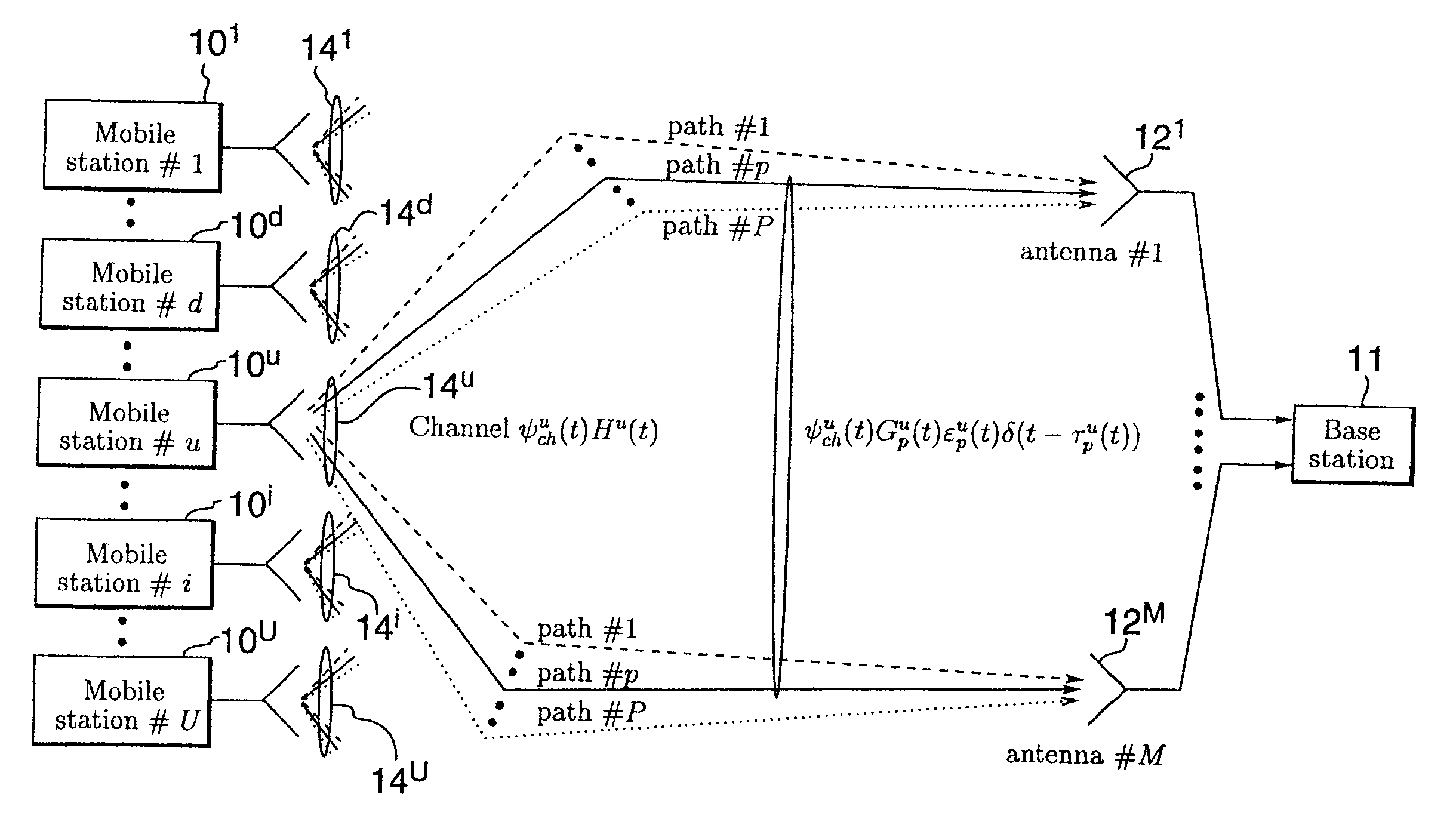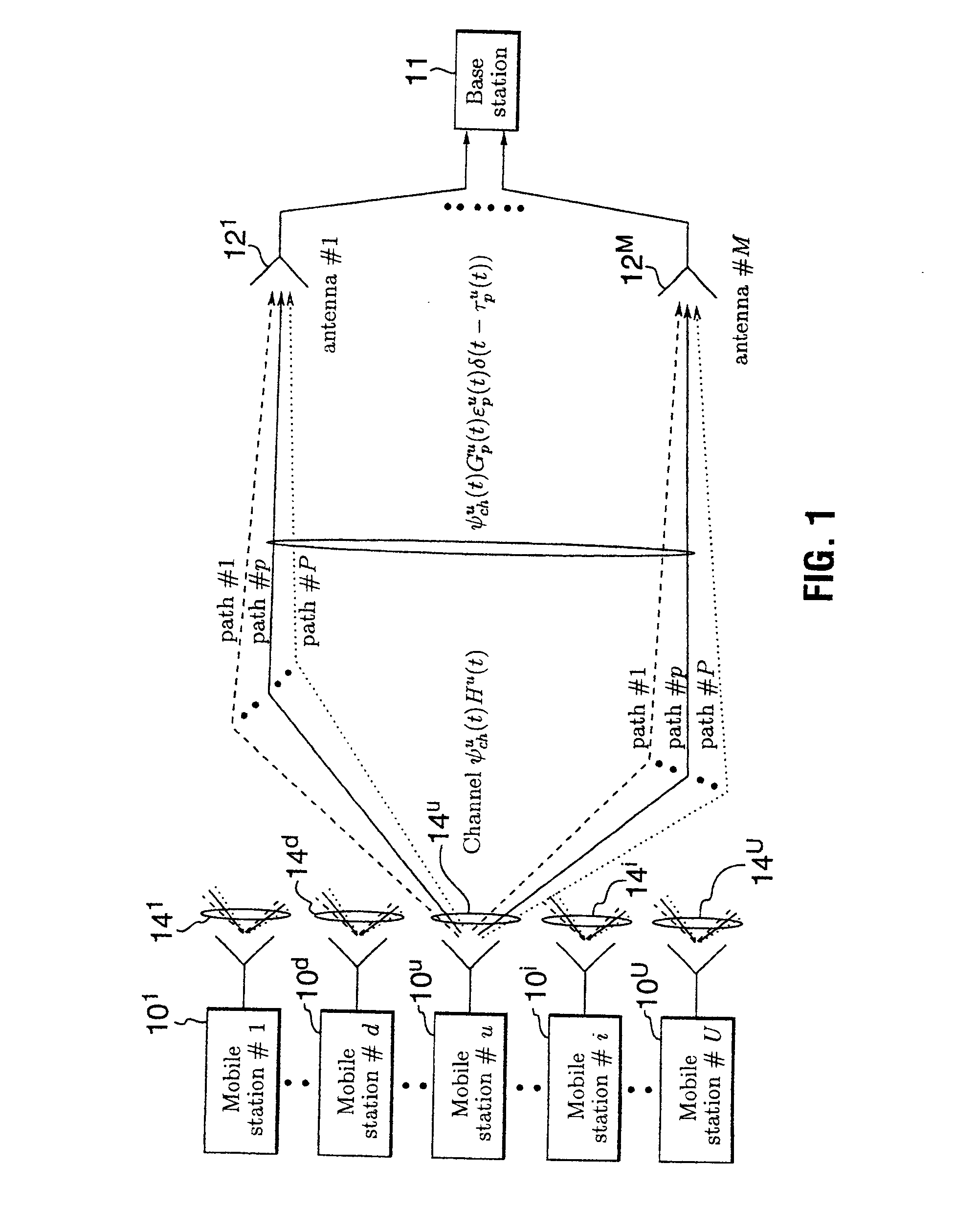Interference suppression in CDMA systems
a communication system and interference suppression technology, applied in the field of interference suppression in cdma communications systems, can solve the problems of insufficient interference treatment, strong interference to the intended signal, and high-rate mobiles manifesting strong interference to the low-rate mobiles, etc., to achieve the effect of improving interference suppression
- Summary
- Abstract
- Description
- Claims
- Application Information
AI Technical Summary
Benefits of technology
Problems solved by technology
Method used
Image
Examples
Embodiment Construction
[0112] In the following description, identical or similar items in the different Figures have the same reference numerals, in some cases with a suffix.
[0113] The description refers to several published articles. For convenience, the articles are cited in full in a numbered list at the end of the description and cited by that number in the description itself. The contents of these articles are incorporated herein by reference and the reader is directed to them for reference.
[0114] FIGS. 1 and 2 illustrate the uplink of a typical asynchronous cellular CDMA system wherein a plurality of mobile stations 10.sup.1 . . . 10.sup.U communicate with a base-station 11 equipped with a receiving antenna comprising an array of several antenna elements 12.sup.1 . . . 12.sup.M. For clarity of depiction, and to facilitate the following detailed description, FIGS. 1 and 2 illustrate only five of a large number (U) of mobile stations and corresponding propagation channels of the typical CDMA system, o...
PUM
 Login to View More
Login to View More Abstract
Description
Claims
Application Information
 Login to View More
Login to View More - R&D
- Intellectual Property
- Life Sciences
- Materials
- Tech Scout
- Unparalleled Data Quality
- Higher Quality Content
- 60% Fewer Hallucinations
Browse by: Latest US Patents, China's latest patents, Technical Efficacy Thesaurus, Application Domain, Technology Topic, Popular Technical Reports.
© 2025 PatSnap. All rights reserved.Legal|Privacy policy|Modern Slavery Act Transparency Statement|Sitemap|About US| Contact US: help@patsnap.com



